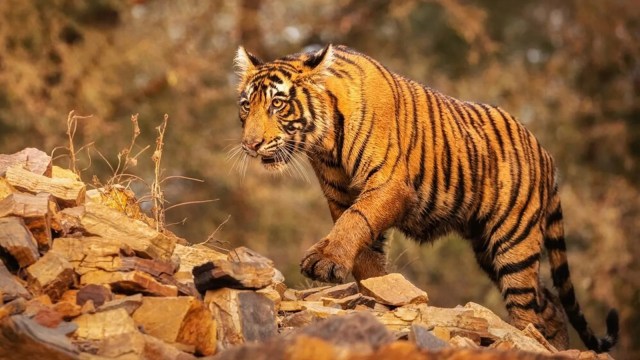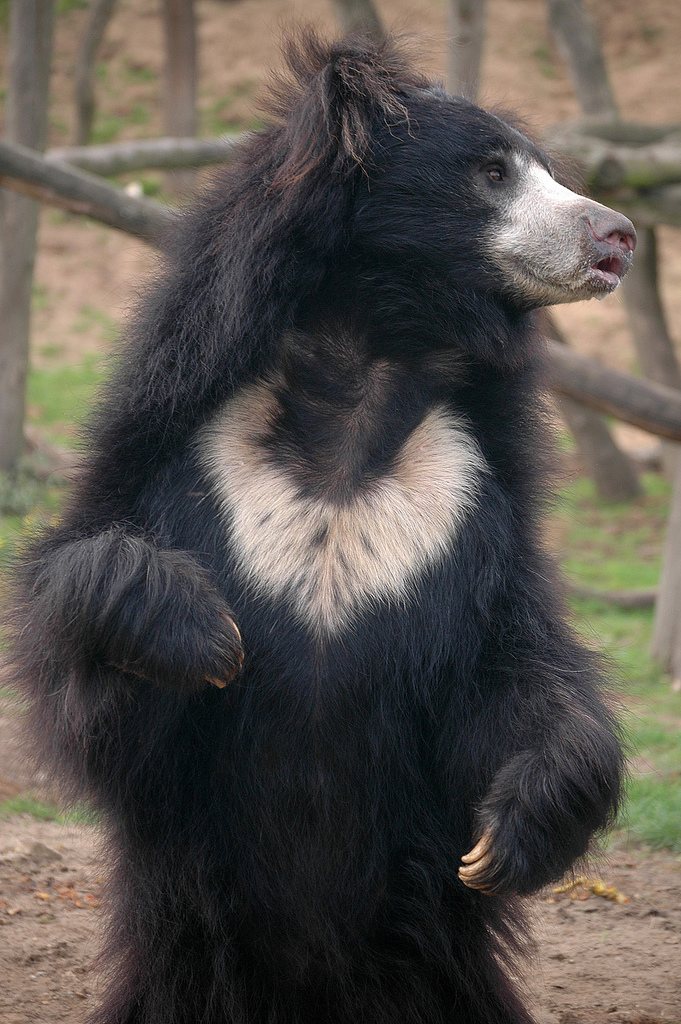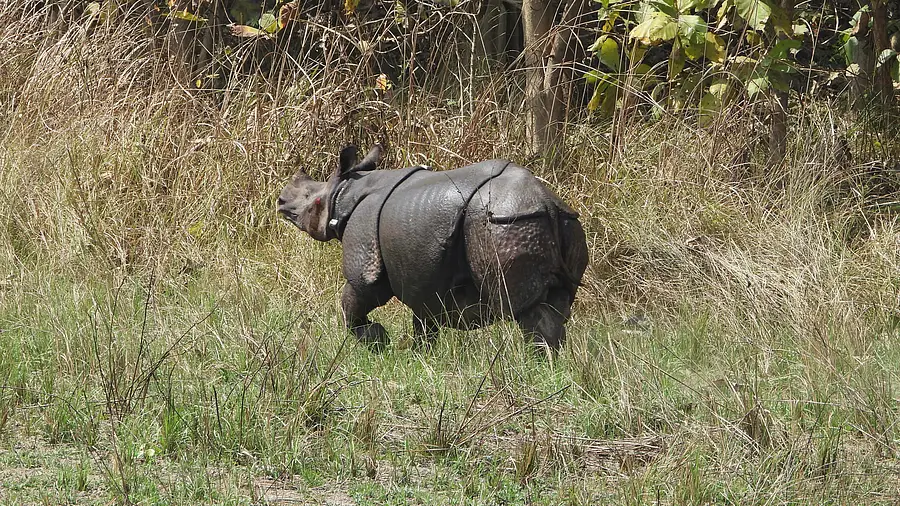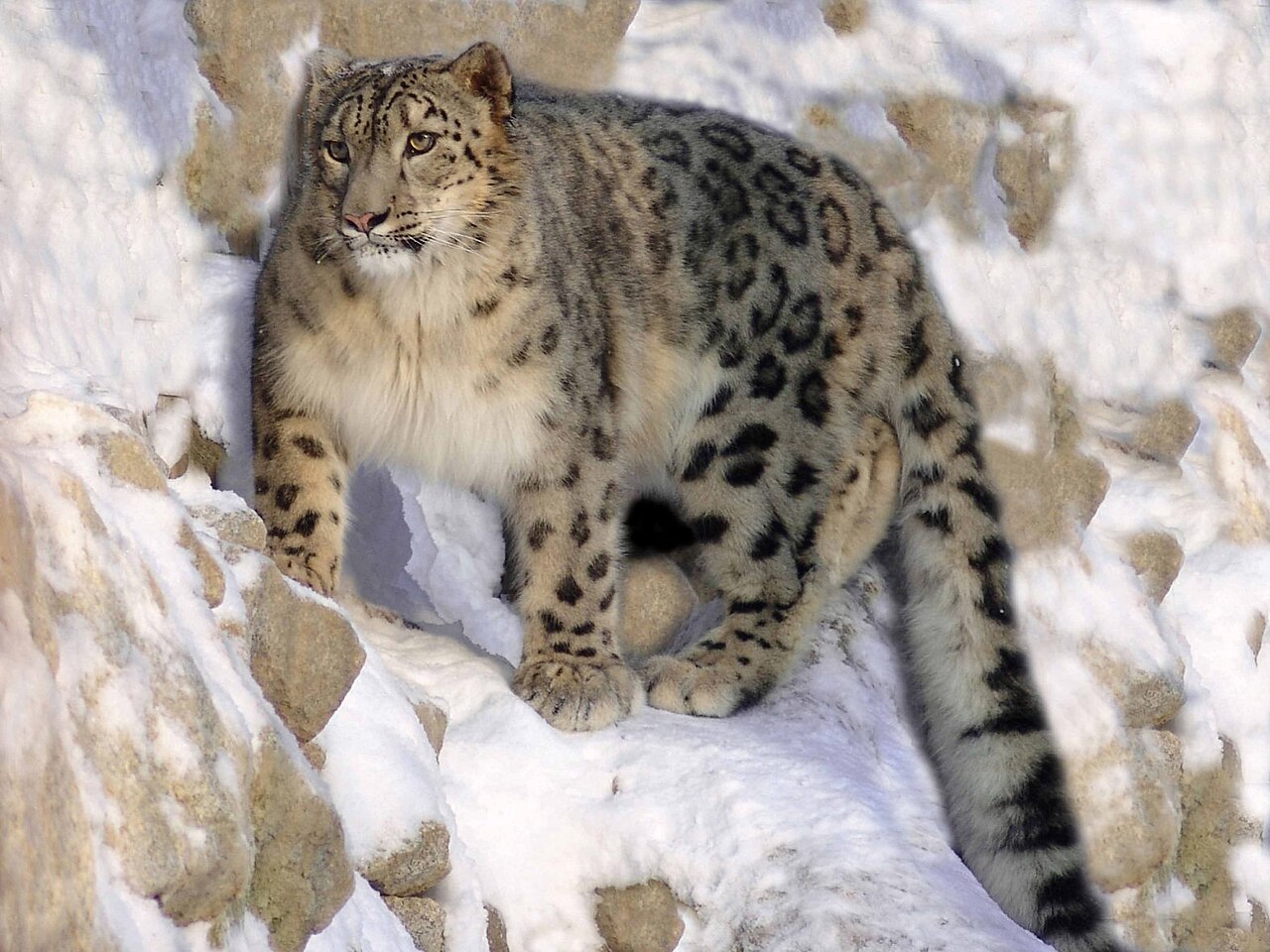 |
| Bengal tiger |
Six years ago, Gujarat experienced an unexpected brush with the wild when a tiger appeared near Lunavada in Mahisagar district. Camera traps confirmed its presence, suggesting it had wandered in from Rajasthan, likely in search of new ground. Tragically, that journey ended in suspected poisoning. Now, another tiger has emerged in the state—this time a five-year-old male, repeatedly seen along the edges of the Ratanmahal Sloth Bear Sanctuary in Dahod district. This sanctuary borders Madhya Pradesh’s Jhabua and Kathiwada, regions teeming with tigers. According to wildlife officials, the newcomer may be pushed by rising tiger numbers in neighboring states. Still, with no signs of territory-marking, it’s too early to say Gujarat has a resident tiger once again. The last time the state hosted a tiger population was back in 1989, when about a dozen roamed the Dang forests. By 1992, tigers had vanished, and Gujarat was declared officially tiger-free.
 |
| Sloth bear |
I sincerely hope that this tiger will one day establish its territory in Gujarat, making it the only state in India where lions, leopards, and tigers coexist. In the meantime, it’s essential to closely monitor its movements to understand its range, proximity to human settlements, and the wildlife it encounters during its search for new territory. The Ratanmahal Sloth Bear Sanctuary—aptly named for its thriving population of sloth bears—is one of five such sanctuaries in Gujarat where the species flourishes. In other regions of India, sloth bears and tigers share overlapping habitats, and interactions between them are not uncommon. These encounters can result in a bear successfully deterring a tiger through defensive behavior, the bear falling prey, or injuries to both animals. Understanding how this tiger navigates such dynamics will be crucial. Additionally, documenting signs of territorial behavior—such as claw marks, urine spraying, and scat—will offer valuable insights into whether the tiger intends to settle in the area.
 |
| Entrance to Ratanmahal Wildlife Sanctuary |
I am also encouraged by the response of local authorities in Dahod district, who have advised villagers not to panic over the tiger’s presence. Fear often leads to tragic outcomes, including retaliatory killings. A recent incident in Assam, where a tiger was brutally killed and mutilated by an enraged mob, underscores the urgency of addressing such conflicts with compassion and knowledge. These violent acts are not only unjustifiable but also severely undermine conservation efforts for apex predators like tigers. Raising awareness through community education and promoting coexistence strategies are vital steps toward fostering harmony between humans and wildlife, especially in areas where such interactions are increasingly inevitable.
















